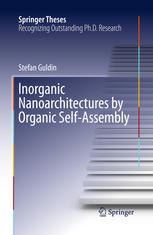

Most ebook files are in PDF format, so you can easily read them using various software such as Foxit Reader or directly on the Google Chrome browser.
Some ebook files are released by publishers in other formats such as .awz, .mobi, .epub, .fb2, etc. You may need to install specific software to read these formats on mobile/PC, such as Calibre.
Please read the tutorial at this link: https://ebookbell.com/faq
We offer FREE conversion to the popular formats you request; however, this may take some time. Therefore, right after payment, please email us, and we will try to provide the service as quickly as possible.
For some exceptional file formats or broken links (if any), please refrain from opening any disputes. Instead, email us first, and we will try to assist within a maximum of 6 hours.
EbookBell Team

4.7
66 reviewsMacromolecular self-assembly - driven by weak, non-covalent, intermolecular forces - is a common principle of structure formation in natural and synthetic organic materials. The variability in material arrangement on the nanometre length scale makes this an ideal way of matching the structure-function demands of photonic and optoelectronic devices. However, suitable soft matter systems typically lack the appropriate photoactivity, conductivity or chemically stability. This thesis explores the implementation of soft matter design principles for inorganic thin film nanoarchitectures. Sacrificial block copolymers and colloids are employed as structure-directing agents for the co-assembly of solution-based inorganic materials, such as TiO_2 and SiO_2. Novel fabrication and characterization methods allow unprecedented control of material formation on the 10 – 500 nm length scale, allowing the design of material architectures with interesting photonic and optoelectronic properties.